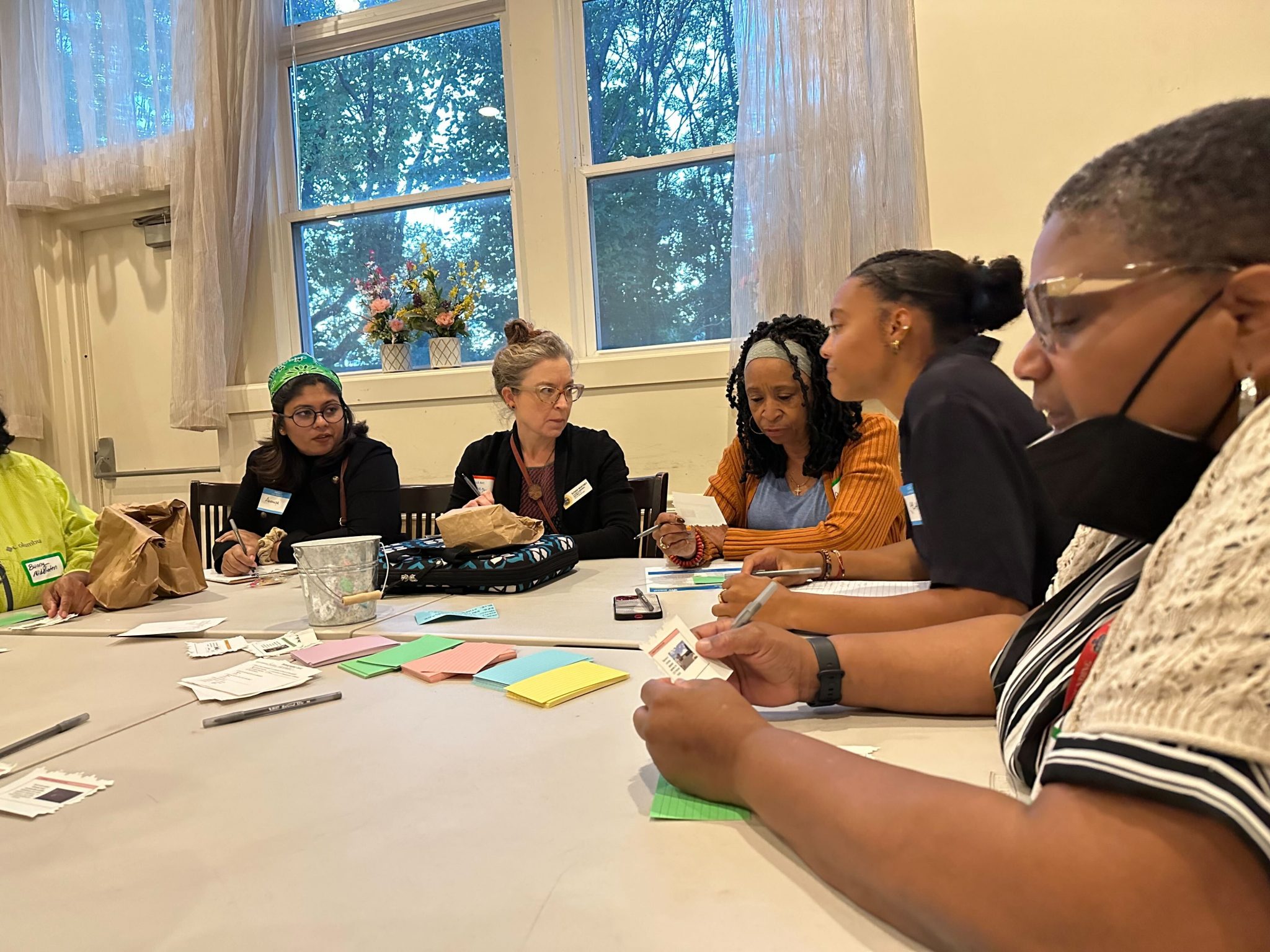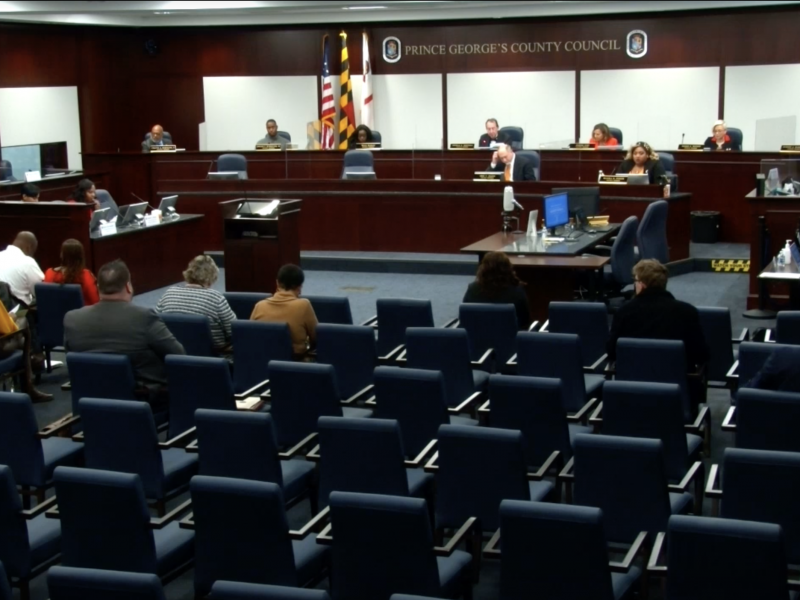Keith Webster remembers his childhood in Lakeland fondly.
“I knew everybody, everybody knew me,” Webster said.
Standing in the Washington Brazilian Seventh-day Adventist Church — formerly the site of Lakeland High School — last Tuesday night, Webster recalled days of convenience store jukeboxes, dances and a kind community around him.
Lakeland is a historically African American community in College Park. A series of urban renewal efforts from the 1960s to 1980s disrupted the tight-knit neighborhood, pushing Lakeland residents out of their neighborhood as developers made unkept promises to revitalize the community.
Now, a group of University of Maryland graduate students is putting together a comprehensive report on improvements needed in Lakeland in hopes of rebuilding trust between residents, the city and this university. The effort is part of a community planning capstone course in this university’s architecture, planning and preservation school.
The initiative will center the wishes of Lakeland residents in drawing up solutions and recommendations, according to Bi’Anncha Andrews, an urban and regional planning and design doctoral student and teaching assistant for the course.
“We know we can’t reverse those harms but [we can] prevent future harms from happening and actually restore the trust in the community,” Andrews said.
[College Park City Council discusses potential expansion of mayor pro tem role]
The capstone class is a joint effort between this university’s Partnership for Action Learning in Sustainability program and the city’s planning and community development department. It’s happening alongside other restorative justice efforts across the city, including the Restorative Justice Commission.
The graduate students hosted a community conversation on Oct. 10 — where Webster spoke — to hear from Lakelanders and other community stakeholders about what’s needed from the city for restorative justice in the neighborhood.
Of Lakeland’s 150 homes, 104 were demolished and replaced by townhouses and high-density student apartments by the early 1970s. An estimated two-thirds of Lakeland residents were displaced during the urban renewal process. Many were unable to return due to the increased cost of living and new people moving into their neighborhood.
As community members discussed solutions at last Tuesday’s gathering, Webster said Lakelanders should get first priority to purchase homes in Lakeland. While Lakeland will never be what it once was, Webster said, this could allow the “flavor” of the community to return.
Webster moved out of Lakeland when he was 13 years old, a few years before the urban renewal process began, but some of his family remained. He’s seen the impact that the community’s decimation left on his family members who were uprooted from their homes, including lingering trauma, he said.
Dwight Brooks, a Lakeland resident, agreed with Webster about the importance of prioritizing Lakeland residents who have lived through the urban renewal in land and home ownership.
“I want to keep the soil, the dirt, the houses,” Brooks said.“If we cannot obtain and hold on to the land and what we still have, it has such an effect.”
Brooks added that he has been wary of planning projects in the past. Promises for the neighborhood’s future haven’t always been kept, including during urban renewal, he said.
Brooks said he hopes future plans for Lakeland will preserve the community, not just memorialize it.
“You can’t look at us in a glass enclosure and say they used to be here,” Brooks said. “There’s still some earth here that we have, some homes here that we have.”
In an aim to connect with Lakeland residents about their wants and visions for the community’s future, the students in the capstone class will examine three potential paths for the neighborhood: leaving it as is, making reforms and making radical change.
The graduate students’ proposals and recommendations could include new buildings, roads, social programs, green space and more, according to Clara Irazábal, director of the urban studies and planning program in this university’s architecture, planning and preservation school. Irazábal teaches the capstone course.
“Justice is a very central principle in our discipline of urban planning,” Irazábal said.
The fall capstone cohort plans to build off the work of the last cohort, which identified four focus areas for Lakeland’s future: climate change adaptation and mitigation, house and land use, community development and infrastructure and restorative justice.
[Proposed development could displace 3 College Park restaurants]
For some Lakeland residents, including Ruth Murphy, the students’ work on this initiative is an exciting possibility, especially amid calls for community stakeholders — like the university — to “bridge the gap” they’ve helped create.
Murphy, who moved to Lakeland in the 1980s, said she’d like to see the university offer free tuition to the descendants of those who were displaced from the community during urban renewal.
“I think that’s critical to help bridge the gap that they helped create,” Murphy said.
She’d also like to see public gardens in the community and spaces for senior residents built on older properties.
Lakeland residents’ wishes for their community, including those voiced at Tuesday’s gathering, come in the midst of an increase in university students moving into the neighborhood — a trend some in the community say is changing the neighborhood’s dynamic.
Lakeland resident Patricia Middleton said she would like to see the neighborhood become family-oriented again, and suggested ending student rentals in the area.
“This is not ‘university.’ It’s Lakeland, it’s a community,” Middleton said.
Students in the class will host another community meeting in December to share their findings as they continue soliciting thoughts from Lakeland residents. At the end of the course, students will present their final report to the planning department.
Irazábal said she has high hopes for the neighborhood’s future and her students’ impact.
“I hope that they push the boundaries of what we imagine if it’s possible, to turn this community to its best version of itself,” Irazábal said.



